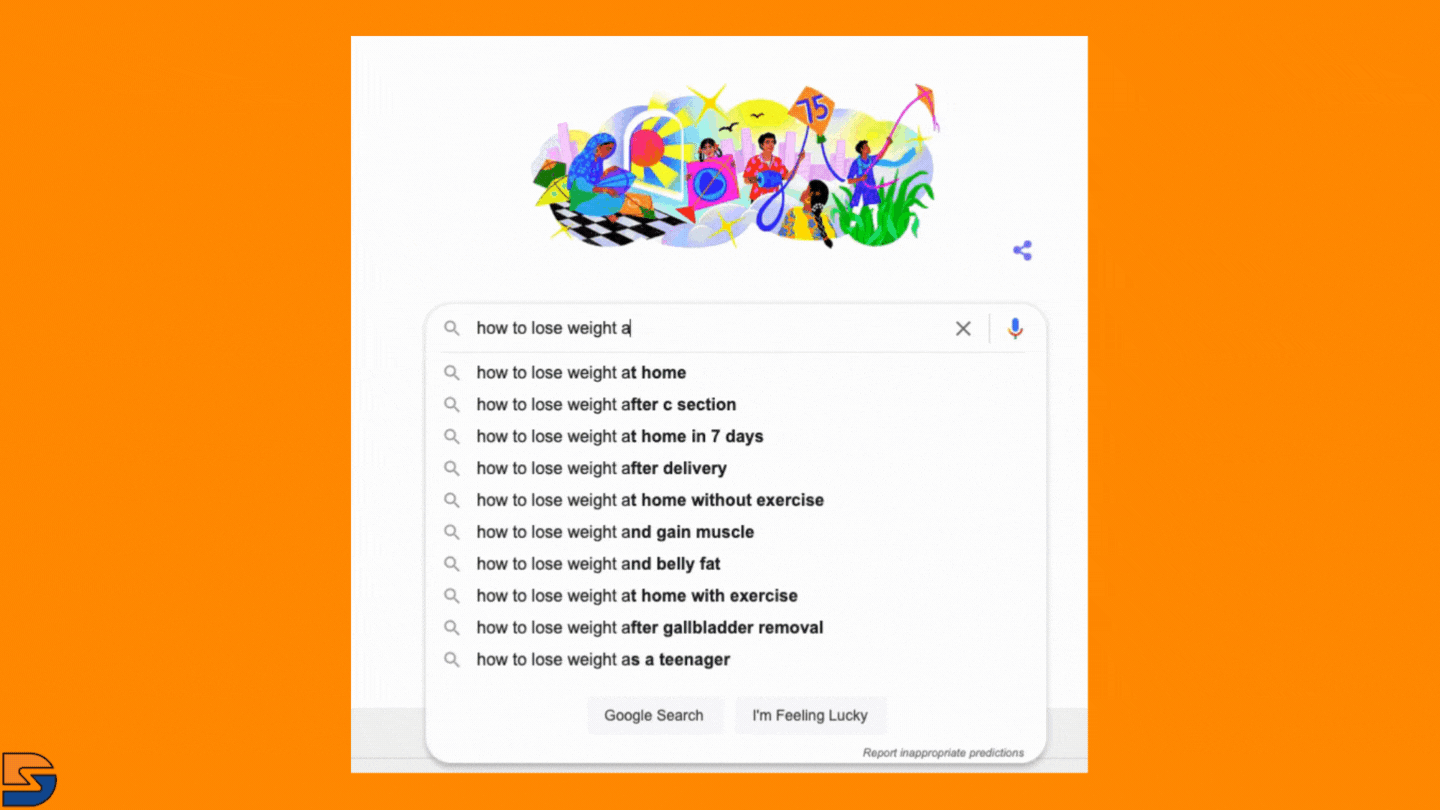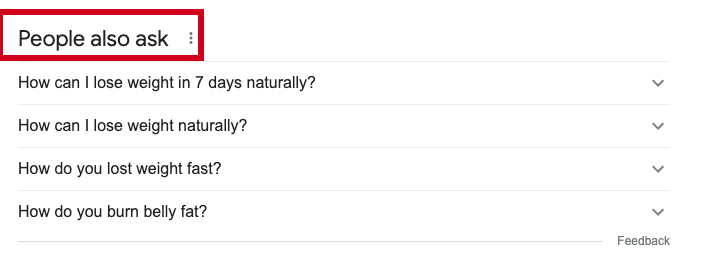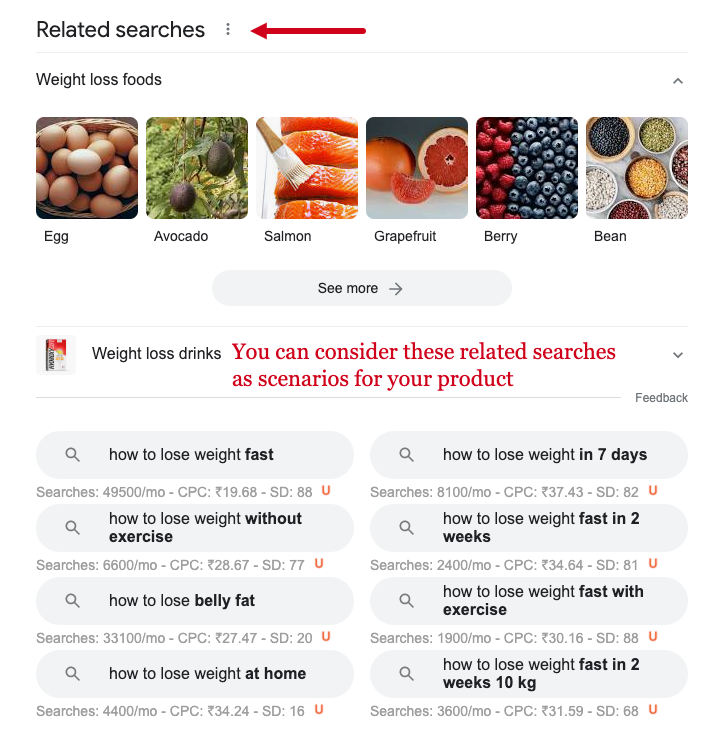While starting a business is becoming easier, validating it is becoming crucial with it. One of the major reasons why businesses fail is validation. No amount of dedication can save an unvalidated business idea.
No matter how good of an idea you think you have, if it’s not validated, it’s a waste of time. Asking the right questions can help you validate your idea & avoid spending a ton of money on marketing. This post is your 7-day plan to validate your idea & start making $$$ online.
Let’s dive right in.
Day 1: See if people are searching for it
Nearly 7 billion searches are made every single day on Google alone. Do people search for the problem you’re trying to solve? Is there even a problem?
Google can reveal some interesting data around this. Simply searching will tell you if people actually want ‘this’. Depending on the intent of the search term, you can know if people are ready to pay.
See the search results, check out the pages, are they selling something? What’s the value of the products being sold? Not the price, the value. Draw conclusions based on first impressions if whether pursuing the idea will turn out to be profitable or not.
Go to Google right now & enter the problem you’re trying to solve. But before that, a little bit of theory.
How do search engines work?
Google search is a complex engine. But to simplify, I will explain the concept in layman’s terms.
Imagine yourself going to a fancy restaurant. You’re visiting for the first time, so you browse through the menu before ordering. After a while when you’ve gone through the whole menu, you’re in a position to order something. You try it & leave.
Next time when you visit the same restaurant, you’re no more new to the menu, you already know what to look for. If the food is nice, you also recommend people, specific dishes from their menu.
That’s exactly how search works. There are three processes that work behind the curtains.
Crawling – Indexing – Ranking.
Crawling, like in the example above is you visiting the restaurant for the first time & browsing the menu. The crawler saves an indexed/cached copy of a page visited to be indexed when required.
The index is a huge database where all the crawled webpages are stored & fetched when a user searches on Google. The job of the index is to logically organize all pages.
Once the user searches for something, the index fetches all the pages matching the search query & the algorithm ranks it based on over 200 ranking factors & 50 variations of each of those factors (10,000 ranking factors in total).
The game is on after this.
For further reading: How search engines work [Detailed guide]
Free tools to find what people are searching
#1 Search soup method
Rather than explaining, let me show what it looks like.

Doing this will reveal how people are searching. These suggestions derive directly from the index of Google.
#2 People also ask
The people also section also can give you a lot of ideas about what & how people are searching on Google. This will not only help you validate your idea but will also help you improve your idea.

#3 Related searches
Just like people also ask, related searches help go deep into the rabbit hole of a particular search term. If you researching for pain points, the related search can be a great resource.

Day 2: Build a landing page
Once you have some proof that there’s demand for your idea or at least people discussing it as a problem, it’s time to create a landing page where you pitch your solution to the target audience.
Right now, create a super simple landing page with a direct message – no fancy stuff. You’re not selling anything yet so don’t worry about conversions, sales & all such good stuff.
Tools to build landing pages
I’ve been a fan of WordPress since the day I discovered it. It has evolved wide enough to be used as a landing page as well. Furthermore, there are no-code landing page builders like Webflow.
Understanding the basics of building a landing page
As much as I intend you to create a simple landing page, I also want to share some best practices that you should keep in mind while creating a landing page so that you don’t waste your time & energy without realizing the problem.
- Message in CTAs & landing page should be the same. Doesn’t matter if you run an ad or drive traffic via blogs, the messaging should be consistent throughout.
- Place the call-to-action in the first fold itself. Soon after landing on your page, the visitor should clearly know what needs to be done. There’s no room for confusion. Strickly one action, nothing else.
- Design your page so that there are directional cues for the eye to follow. We know for a fact that we don’t read the full page. We scan the page, directional cues help users stay on track & not lose focus while scrolling.
- Optimize for all sizes & ensure it loads blazing fast. This is not a post-credit scene of a Marvel movie. No one would be patient enough while on your page. Don’t give them a reason to leave.
- Use testimonials of people who have tried your product firsthand. We will talk about it in subsequent sections. But consider including testimonials. Testimonials will make people look for their wallets to pay you already.
That was a bit about the landing page, but what goes into it is even more important. Let’s brush up on copywriting basics as well.
Copywriting basics for landing pages
- Use headings & bullet points: People skim through the page, give them eye-soothing headings that they can quickly scan. Bullet point does the same job but for details.
- Frontload important questions: When creating headlines, place the most important information at the front so that it catches the visitor’s attention.
- Forget SEO: Copywriting is not about ranking on search results, it’s about addressing the search intent. Nobody wants to read a 5000-word blog before buying. Give them the meat directly, no BS allowed.
- Know your audience: This is straight from the textbook. Knowing your audience will automatically take care of the most important information that will go on the page. Knowing your audience is copywriting in disguise.
- Omit unnecessary words: If you can convey a message in 3 words, don’t include 4th one, even if it seems cool. Simple is the new cool.
Ideas to bring traffic to the landing page
- Repurpose on social media: Social media is to promote & leverage the existing audience. Things get pretty easy when you have an audience ready to consume what you have to offer. Find what’s the best working content format on the platform & do more of that.
- Collaborate with influencers: Depending on the industry you’re in, find people who’re influential. Build relationships first & ask for genuine feedback. Use their feedback as testimonials & based on their testimonial, you can attract a lot of traffic to the page.
- Write newsletters: Create a newsletter on substack & start writing. Create content around a specific topic for the very targeted audience. Promote the page in the newsletter.
Speaking of newsletters, one of the most important of a business is the contacts. Let’s talk about that.
Day 3: Build an Email list
You know the best way to see if people are really interested in your idea is to see if they’re okay to give their email/contact details for further discussions. We’ve all been there. Giving away email for something valuable.
See how Paula Rizzo, an author, build a list of over 13000 subscribers, talking about productivity.
Content marketing basics
In the case study, Paula mentions that she wrote a lot of blogs to get subscribers. Marketing content is totally misunderstood by many, considering its subjectivity of it. Here’s a foolproof workflow for a great content marketing campaign. Content marketing is not just about creating content, it’s about creating content to promote one thing.
Ask yourself what is that one thing. Ask yourself if the content is your business or for your business. That being said, here are some best practices you can incorporate into your content marketing efforts.
- Understand the crux of content marketing: Identify the people who’ll use your product & create content around all the scenarios in their day-to-day lives. Doesn’t have to be directly related to your product. Always answer, “What’s in it for users?” before creating content.
- Have one north star: Chase one & only one goal out of all the efforts you put in. It can be sales, subscribers, signups, email, etc. Don’t go too thin by chasing too many goals. Remember, there’s only one north star in the night sky. Pick one for yourself.
- Choose the right metrics: Instead of working on the number of page views, work on the number of unique pieces of content created as part of the promotion.
Another method I wanted to touch upon is blogging. It sounds old fashion but those who find it that way, don’t understand its importance of it. Most people don’t get the difference between content marketing & blogging.
Both are different. Let me show you how
Blogging for business
When blogging for business, it’s crucial to understand its primary goal of it. The primary goal of blogging for business is not sales, it’s promotion. Making people aware of your existence. Blogging is about showing up in front of the right people at the right time.
Speaking of the right time, most of your customers aren’t ready to make a purchase. Blogging for business ensures that you show up at the top when they’re ready.
Content marketing is different from Blogging. Content marketing is marketing the content you create, in this case, blogs.
Understanding this fundamental is crucial as you may drown in the attractive numbers of both these worlds.
Both content marketing & blogging for business can get you enough email subscribers who are potentially your customers, who aren’t just ready to make a purchase.
This brings us to what you’ll do to get email subscribers.
Day 4: Run Facebook Ads
Before you lose your mind, relax. This is optional. Do it only if you need results quickly. Facebook has nearly 3 billion active users. You’d need only a pinch of it to validate your business idea.
Here’s how you running Facebook ads can help you.
Get early feedback
Facebook ads will reach thousands of people in a matter of hours. Even if 1% of those people check out what you have to offer & leave feedback, imagine the improvement your idea would have.
Some may even convert right away, obviously if your product is appealing enough. They may even tell people about it. Mouth publicity is the goal, isn’t it?
Don’t focus on leads, yet
“How does not focusing on leads help, Shubham?” You’d ask.
Here’s how. Initially, all we will do is test the waters. If people are ready to pay you for your product, that’s a validation of your business idea. Remember! you don’t have a product yet, it’s just an idea.
if you’re lucky enough, you’d have an idea so good that people would join the waitlist to have your product. They may even pay an advance to pre-book. Remember what happens with the latest iPhone?
The feedback & a nod from people for your product is enough proof to move to production.
Learn from people who’ve run successful Facebook ads
See how Gary Fox of Hostbustlers ran Facebook ads to make $35k/month. To inspire you further, I’ve found this & this list of Facebook ads case studies.
Day 5: Talk to potential customers
Spend time on Facebook groups, Reddit, Quora, Linkedin, Twitter, Offline meetups, Producthunt, and Niche forums like Indie hackers.
Note: I’ve found this tool helps you find subreddits with audience overlap.
Ask them if your product solves any of their specific pain points. Don’t market your product yet, just ask the right questions. Ask if they’d pay for such a product. Be upfront that you’re not going to sell them anything, if they agree, they’d get it for free. If you’re hitting the right chords, they’d offer you to Do it for them. That’s validation.
Talk to as many people as you can.
How to talk to people without being salesy?
Social media has opened the doors for everyone to get in touch with anyone. Find people who can teach you, who can pay, or who can collaborate with you.
In this case, focus on finding people who can pay you. Check out their profile & build a relationship. For example, I used to be super active on Facebook groups some time ago. I used to comment on questions people used to post there.
Once I had the relationship established via comments, I used to take the conversation to their DMs. I break the ice by asking simple & direct questions that helped me understand their pain points.
It’s just the beginning that’s difficult, once started, the conversation will continue.
Marketing Automation
What if there was Zapier for outreach? The whole process that I explained above can be automated. All you have to do is find the people and start the automation.
You already know where to find people you can talk to, let me show you how to automate the process of reaching out.
I use a tool called, TexAu & here are the basic steps you can copy & reproduce on any social platform.
- I find profiles of people on social platforms, let’s say, LinkedIn.
- I manually sort through the list to eliminate the profiles that are not a right fit for me
- I set up the automation to reach out to each one of those people on the list with a near-perfect personalized message.
- Talk to at least 10 people a day & you’ll have enough to work upon.
Day 6 & 7: Create an MVP
You have feedback, you have proof that people are interested in one such solution & you have positive responses in terms of validation.
It’s time to build a prototype or even the first version of your product that early birds can use. If people signed up as advanced payers, they can even get the working product at their fingertips.
How ‘not’ to create an MVP?
The how part of subjective, so talking about it is pointless. But what isn’t subjective is how people overcomplicate MVP that they end up doing nothing.
Don’t be too strict on perfection, it’s the enemy of growth. No matter how hard you try, there will always be room for improvement. People have already shown faith in the solution, they’ll be okay with a few shortcomings here and there.
MVP is your insurance for growth. It’s the safety net that will prevent your idea from failing. It doesn’t have to be perfect, it just needs to be working.
Keep improving along the way. Remember! MVP is for prototyping, not for sale.
Final thoughts & TL;DR
This guide has walked you through the steps you will need to perform to validate your idea. This is in no way concrete evidence of success. There are several factors governing the success of an idea. These steps will only validate your idea to save you a ton of time that you’d lose had you not read this post.
You don’t need thousands of people fighting with each other to get your product, even if a few give a positive response, count it as validation.
How you take your product from those few to thousands & millions is what marketing & promotion will do. Need help with that? Hire me for consulting & answer your questions related to content marketing & SEO. This is for those who have an idea, and an audience but can’t grow to the desired scale.
If you want me to write for you & take care of SEO, drop me an email. Please mention how you found me, maybe through this post.

